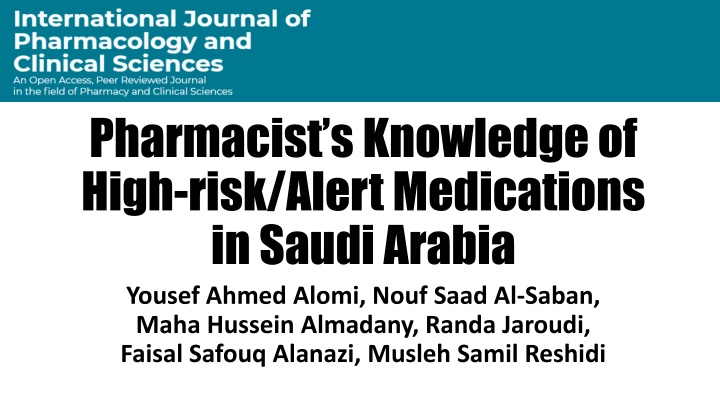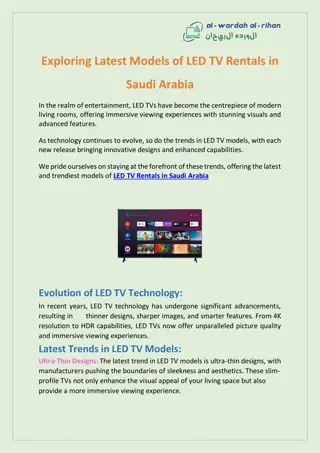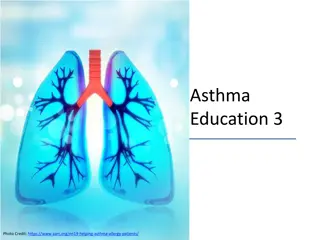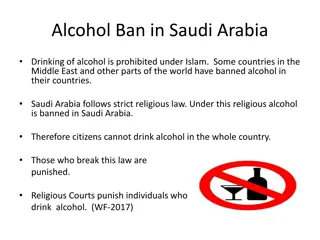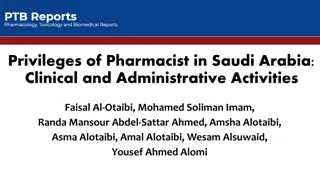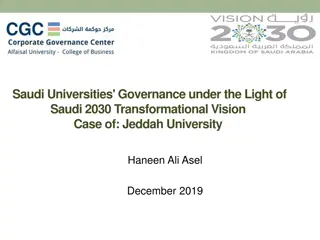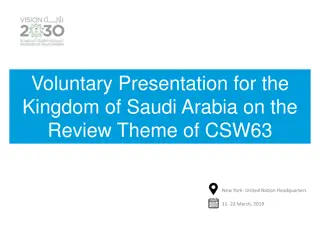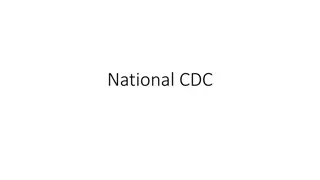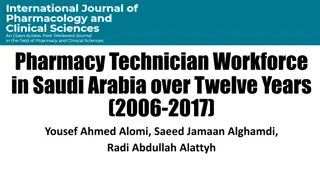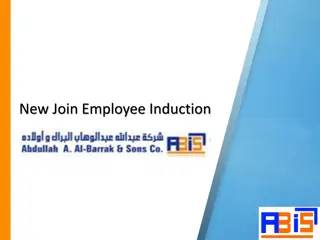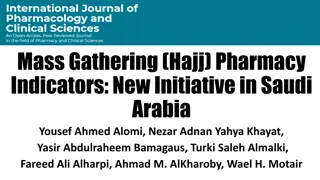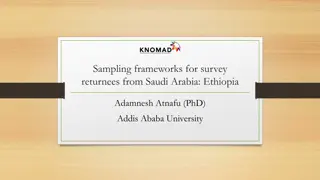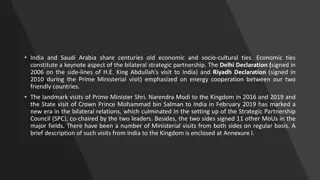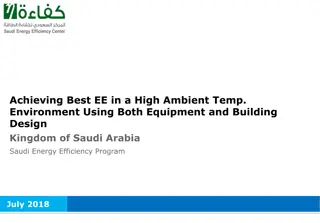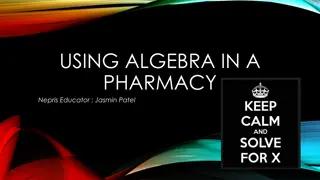Pharmacists' Knowledge of High-risk Medications in Saudi Arabia
This study explores pharmacists' knowledge of high-risk medications in Saudi Arabia through a cross-sectional survey. The results indicate a need for expanded understanding in certain areas to enhance pharmacy performance and patient safety.
Download Presentation

Please find below an Image/Link to download the presentation.
The content on the website is provided AS IS for your information and personal use only. It may not be sold, licensed, or shared on other websites without obtaining consent from the author.If you encounter any issues during the download, it is possible that the publisher has removed the file from their server.
You are allowed to download the files provided on this website for personal or commercial use, subject to the condition that they are used lawfully. All files are the property of their respective owners.
The content on the website is provided AS IS for your information and personal use only. It may not be sold, licensed, or shared on other websites without obtaining consent from the author.
E N D
Presentation Transcript
Pharmacists Knowledge of High-risk/Alert Medications in Saudi Arabia Yousef Ahmed Alomi, Nouf Saad Al-Saban, Maha Hussein Almadany, Randa Jaroudi, Faisal Safouq Alanazi, Musleh Samil Reshidi
ABSTRACT ABSTRACT: : Objectives Objectives: : To explore pharmacist s knowledge of High-risk/Alert medications in Saudi Arabia. Methods Methods: : It analyzes a cross-sectional survey discussing pharmacist knowledge of High-risk/Alert medications in Saudi Arabia. The survey consisted of respondents demographic information about pharmacists, the High-risk/Alert medications assessment of basic knowledge, and The Resources used about the High risk or high-alert medications. The 5-point Likert response scale system was used with closed-ended questions. The survey was validated through the revision of expert reviewers and pilot testing. Besides, various tests of the reliability of McDonald s , Cronbach alpha, Gutmann s 2, and Gutmann s 6 been done with the study. Furthermore, the data analysis of the pharmacist s knowledge of High- risk/Alert medications is done through the survey monkey system. Besides, the statistical package of social sciences (SPSS), Jeffery s Amazing Statistics Program (JASP), and Microsoft Excel sheet version 16.
ABSTRACT: ABSTRACT: Results Results: : A total number of 442 pharmacists responded to the questionnaire. Of them, more than one-third responded from the Central region (183 (40.40%)), and one Quarter responded from the Western part (119 (26.92%)), with statistically significant differences between the provinces (p=0.000). Males responded more than females (264 (59.59%)) versus 179 (40.41%)), with statistically significant differences between all levels (p=0.000). Most of the responders were in the age group of 24-30 years (266 (59.91%)) and 31-35 years (78 (17.57%)), with statistically significant differences between all age groups (p=0.000). Most of the pharmacists were staff pharmacists (323 (72.75%)) and pharmacy supervisors (56 (12.61%)), with statistically significant differences between all levels (p=0.000). The average score of knowledge of pharmacists about High-risk/Alert medications was (3.71). The pharmacists familiar with prohibited abbreviations during High-risk/Alert prescribing medications obtained the highest score (4.42). The element heard about the concept of High-risk/Alert medications got the second highest score (4.39), with a statistically significant difference between the responses (p<0.000). Followed by the pharmacists familiar with look-alike sound-alike of Highrisk/Alert medications (4.30) and know the narcotics and controlled medications (4.27) ), with a statistically significant difference between the responses (p<0.000). The most used resources for High-risk/Alert or high-alert medication information were Drug information resources (Lexi comp-drug information, Micromedex, Epocrates etc. 345 (78.05%), and Scientific literature 222 (50.23%). They were followed by Health practitioners 206 (46.61%) SFDA website 157 (35.52%).
Conclusion Conclusion: : medications is adequate in Saudi Arabia. However, an expanded basic and advanced understanding of High-risk/Alert areas is needed to improve pharmacy performance, patient safety, and quality of life in Saudi Arabia. The pharmacist s knowledge of High-risk/Alert
Key Words : Key Words : Pharmacist, Knowledge, High-risk, Alert, Medications, Drugs.
CONCLUSION: CONCLUSION: The pharmacist s knowledge of High-risk/Alert medications is sufficient. Most High-risk/ Alert medication elements were prohibited abbreviations used during prescribing and looked like sound-alike and narcotic drugs. In contrast, epidural and intrathecal medications, sedation drugs, neuromuscular blocking agents, and Total Parenteral nutrition had the lowest knowledge. Various factors, such as location and age, might affect the pharmacist s knowledge, such as Experiences and pharmacist positions. The working site is the most dependable factor that might negatively affect understanding. The pharmacist knowledge expansion is favorable to cover the other essential High-risk/Alert medication through additional education and training opportunities in the pharmacy practice in Saudi Arabia.
